The Perseverance rover has been operating on Mars for two years now. It explores the Jezero crater, whose name comes from the Slavic word for “lake”. And the most amazing thing is that there really once was a reservoir in this depression. Here’s the story of what scientists think it looked like.
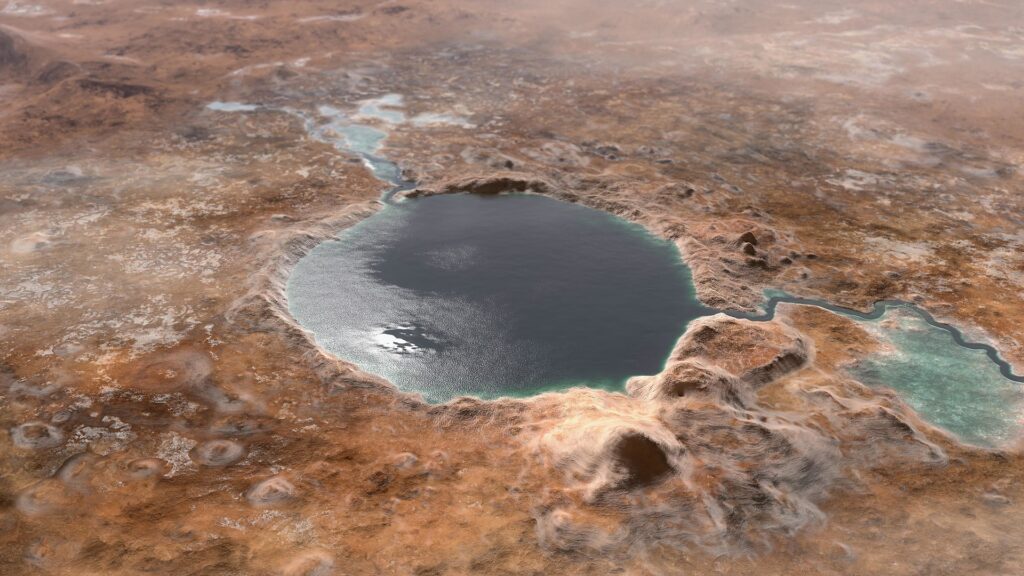
Areological investigation of Perseverance
On February 18, 2021, the Perseverance mobile device landed on the surface of Mars. Since then, it has been working approximately where it touched the surface of the Red Planet — in the 45-kilometer-long crater Jezero. It got its name in 2007, when it was proved using the pictures of orbital vehicles that there was once an ancient lake there.
Officially, the crater is named after a village of the same name in Bosnia. However, it, in turn, simply means “lake” in a number of Slavic languages. Actually, it was the fact that these places once had a body of water that was the reason to select them for exploration by the Perseverance probe. The matter is that this rover is primarily a mobile laboratory for the investigation of mineralogical samples.

The task of the Perseverance mission is to identify the processes that formed this feature of the terrain in the distant past, to find evidence of the presence of water and, if possible, life here. And while the rover program is still far from completion, scientists have already learned a lot about the lake that once existed on Mars.
Formation of the Jezero crater
The Jezero crater lies in the temperate latitudes of the northern hemisphere of Mars. It is located at a level that roughly corresponds to the zero mark of altitude and is on the border between the highlands that occupy most of the Southern Hemisphere of the planet and the northern lowlands where the ocean once was.
To the east of the crater the Valley of Isis lies, a giant round depression that was formed as a result of the collision of a large body with Mars approximately 3.9 billion years ago, that is, no more than 100 million years before the formation of the Jezero crater. Regarding the outer limits of the Isis depression, scientists still argue whether its size is 1,200 km or 1,500 km. In any case, it is at least ten times larger than the Black Sea.
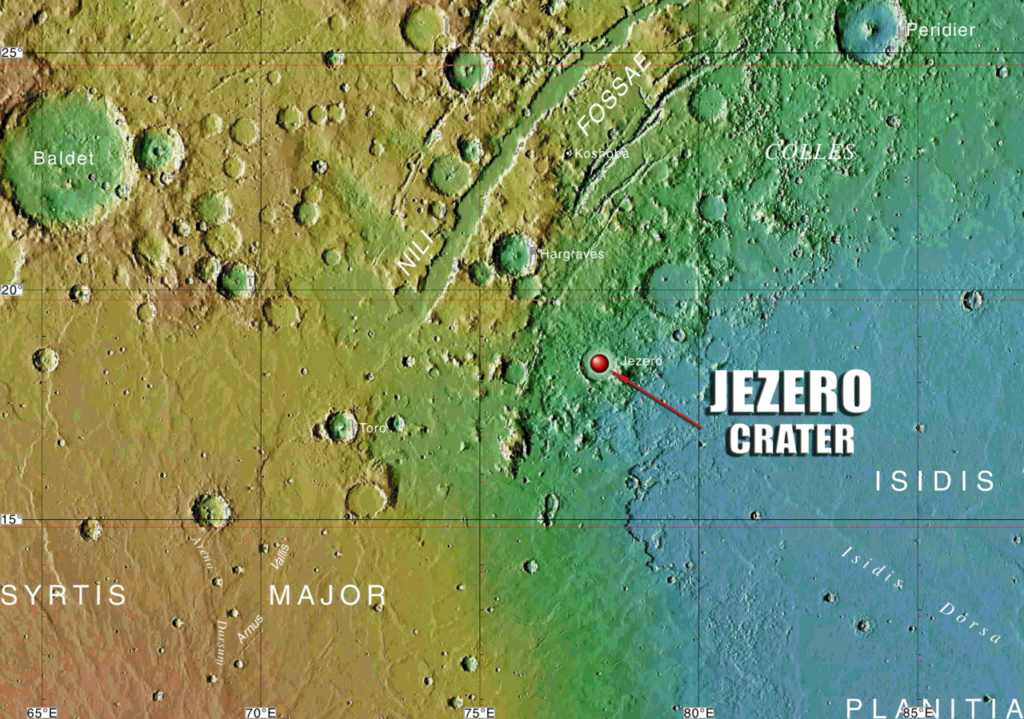
To the west of the Jezero crater is now a giant volcanic region known as the Syrtis Major. At the time of the formation of this depression, it was not yet there, but the terrain to the south and west was still significantly higher than to the east. To the north of it is an uneven surface known as the Nili Fossae.
It was here that a large meteorite struck approximately 3.83–3.99 billion years ago, forming an almost regular circular crater with a diameter of 45 km. If you compare it with the objects on Earth, then it could completely fit Kyiv.
Meanwhile, the climate was changing on Mars. The primary hydrogen atmosphere began to be replaced by carbon-oxygen. The northern lowlands were flooded by the ocean, one of the large gulfs of which was the depression of Isis. Streams of water ran from the mountains to the sea, and the craters on their way turned into flowing lakes.
Lakes and rivers
Scientists still have not been able to reach a consensus about how long the Lake crater was filled with a lake. Some of them say that it can be about tens of millions of years. But studies by Perseverance show that the layer of clay at its bottom is not as thick as expected. Clay is a sedimentary rock that is formed under the action of stagnant water.
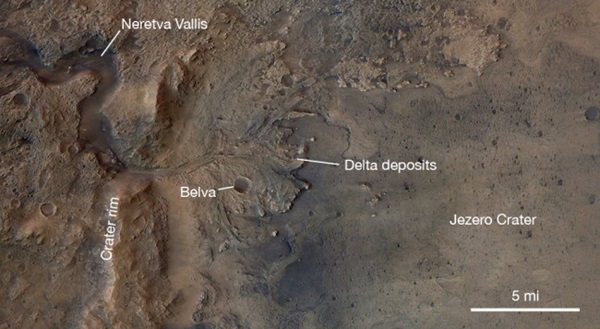
Therefore, the time of existence of the reservoir could well be limited to thousands or even hundreds of years. But there is no doubt that there was once a lake in the crater. Several rivers even flowed into it. The largest of them, the Neretva, carried its waters from the west. We can still see its winding valley on the surface of Mars and a large delta where it flowed into a body of water.
The second big river was named Sava by scientists. It flowed into the Lake from the north. The Pliva River, about 53 cm long, flowed out of it. It was through it that water from the lake entered the sea in the Isis depression. All three watercourses are named after the rivers flowing through Bosnia and Croatia.
Volcanic processes
It is possible that the lake in the Jezero crater formed and disappeared several times. This may be due to the fact that in the southwest of it the giant volcano Syrtis Major was formed, and volcanic activity also took place in the lake itself. At least the researchers found a lot of volcanic rocks in it. Perseverance discovered two clearly tectonic formations on its bottom — Seitah and Maaz. The earthquakes accompanying the volcanic eruptions in Syrtis Major once split and tilted the ancient igneous rocks in these places.
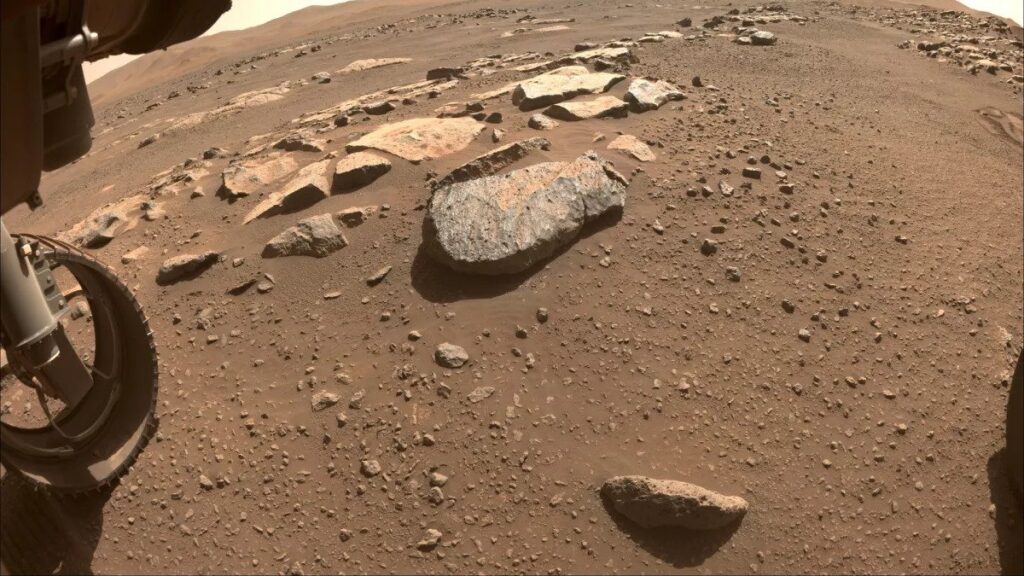
In addition, the rover’s investigation has revealed a lot of the mineral olivine here, which is formed precisely during volcanic eruptions. Currently, it is difficult to say whether the lake was heated by geothermal sources, but red-hot stones fell into it and quite regularly.
Life in Jezero Lake
Volcanic activity in Lake Jezero is often interpreted in favor of the existence of life in it. At least extremophile organisms, which inspire scientists to deem ancient Mars viable, live on Earth precisely in volcanic lakes, geysers and geothermal springs.
So the volcanic activity near the crater only strengthens the hope of researchers that there might once be conditions for the existence of complex enough living creatures. And Perseverance has already found a lot of organic matter there. However, all of those compounds are so simple that they could have formed as a result of abiogenic processes (which occur without the participation of living organisms) not only on the Red Planet, but also simply on rocks in space.
Nothing more convincing has yet been discovered in the Jezero crater. But scientists hope that the reason for this is only the imperfection of the instruments on board the rover. That is why it spent a large part of his journey moving to the place where it would be easiest to find life in the samples — the Three Forks point, located in the ancient Neretva delta.
Neretva Delta
The entire delta is a huge deposit of sedimentary rocks, which the river once carried here from the volcanic hills. On Earth, such places are literally teeming with life — so where else to look for its remains on Mars, if not here?
The Neretva Delta has been Perseverance’s goal from the start. But landing directly on it was impossible, so the rover landed on the bottom of the Lake crater nearby. After that, it had to track around Kodiak Rock, which was once a remnant island near the Neretva Delta, similar to Zmiiny Island near the Danube Delta or Berezan at the mouth of the Dnieper.
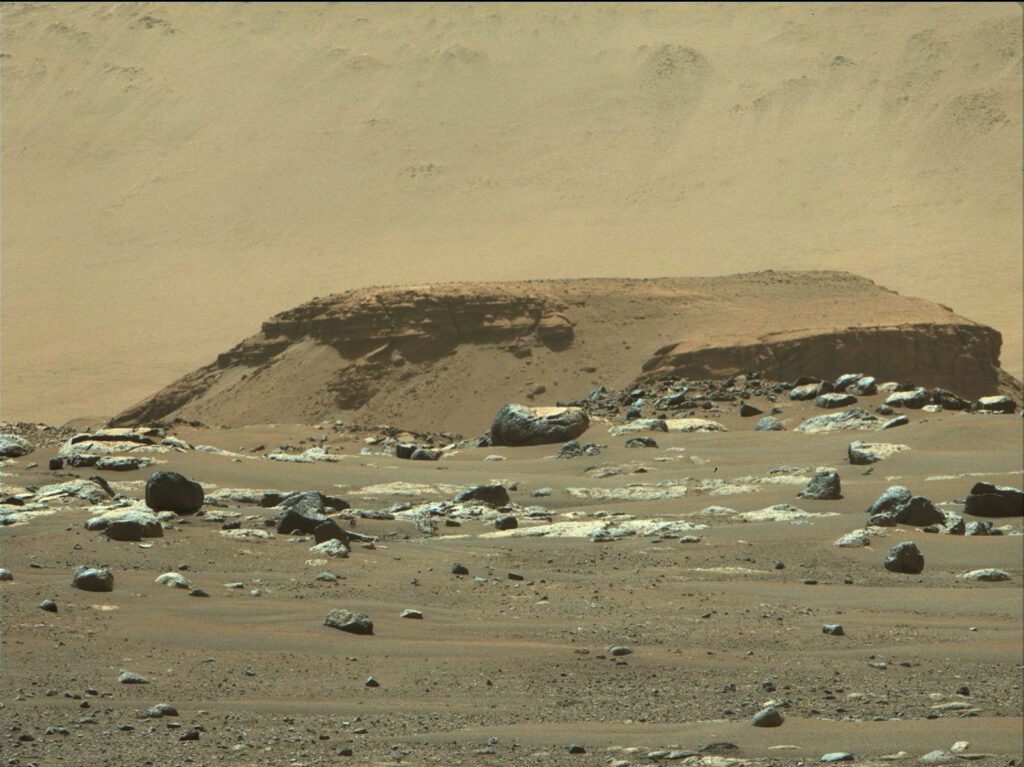
But about a year ago, the rover finally reached Three Forks and collected samples of sedimentary rocks. However, only scientists on Earth will be able to make a final conclusion about whether they have traces of life or not, after the capsules with Martian soil are delivered here in the next decade.
It also remains unknown whether this lake was an oasis full of life on ancient Mars, or whether it was a dead volcanic region. Scientists are only certain that during the Hesperian period, which came at the same time as the formation of the reservoir, the Martian climate began to change slowly. The oceans in the northern hemisphere of the planet began to disappear, the atmosphere was getting ever thinner. Together with it, the glaciers that fed the water streams heading to the sea began to disappear. Lakes gradually dried up, Jezero was no exception. Apparently, this process has been going on for hundreds of millions of years—perhaps longer than life has existed on Earth.
Eventually, about 2 billion years ago, the climate on Mars took on its modern form. Even volcanoes stopped erupting. The red planet has turned into a dead desert, and only dust storms formed from the silt of ancient lakes remind that life could once exist on it.

